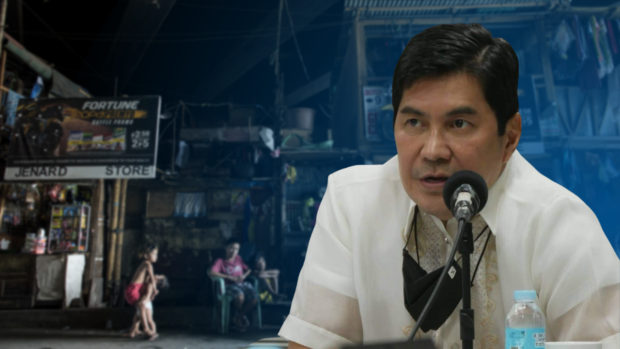
Social Welfare Secretary Erwin Tulfo/PHOTO via Erwin Tulfo’s Facebook page | BG PHOTO: NOEL CELIS/AFP
MANILA, Philippines – Around 30 to 40 percent of the 1.3 million Filipino households that were earlier considered to have “graduated” from extreme poverty may stay on the list of beneficiaries for the Pantawid Pamilyang Pilipino Program (4Ps), Social Welfare Secretary Erwin Tulfo said Tuesday.
Citing his consultation with a group of 4Ps beneficiaries, Tulfo reported this figure during the House committee on appropriations meeting on the P194-billion proposed budget of the Department of Social Welfare and Development (DSWD) for 2023.
The DSWD has earmarked over P115 billion of its proposed 2023 budget for the 4Ps.
Tulfo noted that there were contentions from lawmakers and 4Ps beneficiaries after the DSWD announced its plan to take off 1.3 million from the 4.4 million households receiving conditional cash grants under the government’s poverty reduction program.
READ: 1.3 million families taken off 4Ps: ‘Grads’ from utter poverty
“Some of the lawmakers – when we came up with the list and it came out to the media – objected. Maging iyong mga beneficiary, nagreklamo po because they said, coming from the pandemic, wala naman sigurong yumaman kahit kaunti lamang,” Tulfo said.
(Some lawmakers objected when we came up with the list, and it came out to the media. Even our beneficiaries complained because they said no one probably grew even slightly richer during the pandemic.)
To resolve this, the DSWD chief said they conferred with a group of 4Ps beneficiaries three weeks ago to get a clearer image of the “non-poor” households that may be delisted from the said program.
“I asked them the real status ng mga member nila, and they told me that out of the 1.3 million [households], on their list is around 30 to 40 percent daw po ay hindi pa dapat alisin sa listahan namin. So I asked them if they could come up with a list kung sino po ang mga pwedeng alisin na namin,” he added.
(When I inquired as to the actual standing of their members, they informed me that of the 1.3 million households, 30–40percent should not be stripped away from the list of 4Ps recipients. As a result, I asked that they supply me with a list of the individuals that can be dropped.)
Tulfo elaborated, saying that the DSWD’s and the 4Ps’ beneficiary lists will be checked against data from their municipal link and the National Household Targeting System.
“So we will have four lists to compare para masiguro. Iyon po ang safety net namin na hindi basta-bastang matagal po iyong kawawang tao dahil sa tinamaan siya ng listahan,” he said.
(So we will have four lists to compare from which to draw our conclusion. This is our failsafe to prevent the unexpected removal of vulnerable people from the 4Ps beneficiaries.)
Tulfo then said the households that will be excluded from the 4Ps would be informed before being delisted.
He added that the affected households might instead receive assistance from other DSWD initiatives, including the Sustainable Livelihood Program and the Assistance to Individuals in Crisis Situations.
According to the implementing rules and regulations of the 4Ps Act, beneficiaries are qualified to exit the program under the following instances:
- The last monitored child in the household turns 19 years old;
- The last monitored child in the household finishes high school;
- The household reaches the 7-year duration in the program;
- The household is no longer poor, based on the latest assessment through the adopted standardized targeting system;
- The household voluntary waives its membership from the program;
- The household commits offenses wherein the sanction is delisting, subject to the standards to be developed by the DSWD.
Tulfo said that among these grounds, only the fourth standard was used by the DSWD in identifying the 1.3 million 4Ps beneficiaries who it earlier tagged for delisting.
RELATED STORIES

